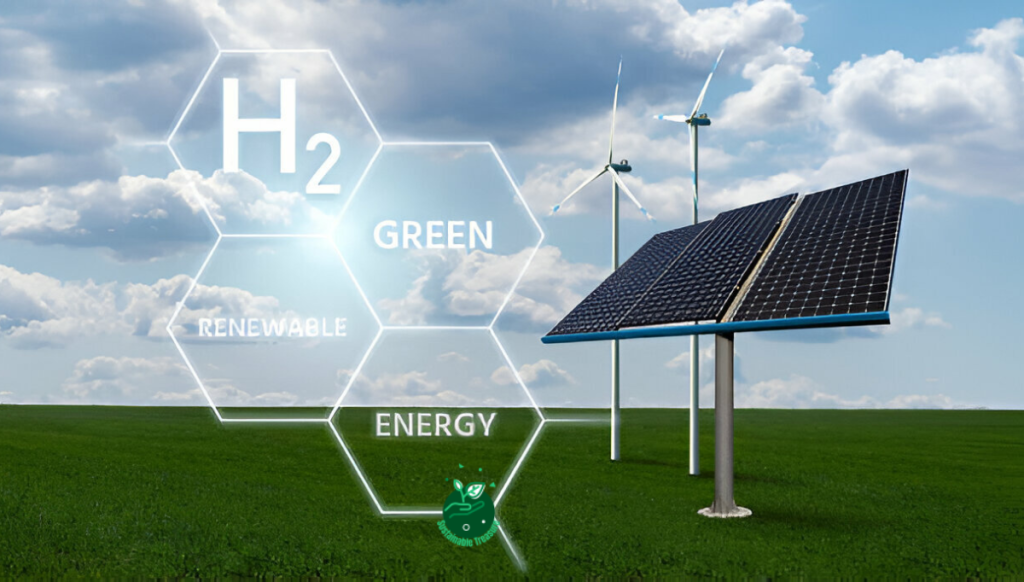Table of Contents
Are you wondering if investing in Biomass Energy worth it? Absolutely! Biomass energy, derived from organic materials like wood, crops, and waste, offers a sustainable alternative to fossil fuels.
During a recent visit to a rural community, I witnessed firsthand the transformative power of biomass energy. Families who once relied on expensive and polluting fuels could now heat their homes and cook meals using locally sourced biomass pellets.
The sense of empowerment and relief on their faces was palpable. This emotional journey made me realize the far-reaching benefits of investing in biomass energy.
In this article, I’ll delve deeper into the pros and cons of this energy source, providing you with a comprehensive understanding to aid your decision-making process.
Let’s dive in.
What is Biomass Energy?

Biomass energy is a renewable source of power derived from organic materials like wood, crops, and waste. It’s considered a sustainable alternative to fossil fuels, making it an attractive option for those looking to reduce their carbon footprint.
Pros of Biomass Energy
Renewable and Sustainable
One of the biggest advantages of biomass energy is that it’s a renewable resource. Unlike fossil fuels, which are finite and contribute to greenhouse gas emissions, biomass can be replenished through sustainable farming practices.
Reduces Dependence on Fossil Fuels
By investing in biomass energy, you’re taking a step towards reducing your reliance on non-renewable sources like coal, oil, and natural gas. This not only helps protect the environment but also promotes energy independence.
Cons of Biomass Energy
Emissions and Air Pollution
While biomass is considered a cleaner source of energy than fossil fuels, it still produces emissions and contributes to air pollution.
The burning of biomass releases carbon dioxide, particulate matter, and other harmful substances into the atmosphere.
Land Use and Food Security Concerns
The cultivation of biomass crops can compete with food production for land and resources. This raises concerns about food security, especially in regions where arable land is scarce.
Types of Biomass Energy
Wood and Wood Waste
One of the most common forms of biomass energy is wood and wood waste. This includes materials like sawdust, wood chips, and pellets made from compressed sawdust.
Agricultural Residues
Agricultural residues, such as corn stover, wheat straw, and sugarcane bagasse, can also be used as biomass fuel.
These materials are often considered waste products and can be repurposed for energy production.
Energy Crops
Certain crops, like switchgrass and miscanthus, are specifically grown for use as biomass fuel. These energy crops are cultivated with the intention of being burned for energy generation.
Biomass Energy Applications
Residential Heating
Biomass energy can be used for residential heating purposes, either through wood-burning stoves or pellet stoves. These systems provide an alternative to traditional fossil fuel-based heating methods.
Industrial and Commercial Use
Biomass is also utilized in industrial and commercial settings for processes like generating steam, powering boilers, and producing electricity. Large-scale biomass power plants can convert various types of biomass into usable energy.
Electricity Generation
Biomass can be burned to produce steam, which then drives turbines to generate electricity. This process is similar to how coal-fired power plants operate, but with a more sustainable and renewable fuel source.
Investing in Biomass Energy Products
Wood Pellet Stoves
For residential heating, wood pellet stoves offer an efficient and cost-effective solution. These stoves burn compressed wood pellets, providing a sustainable alternative to traditional fireplaces or furnaces.
Biomass Boilers
Biomass boilers are designed to burn various types of biomass fuel, such as wood chips, pellets, or agricultural residues.
These systems can be used for heating buildings, generating steam, or producing electricity.
Biomass Power Plants
Large-scale biomass power plants are capable of converting vast amounts of biomass into electricity. These facilities often utilize advanced technologies to maximize energy efficiency and minimize emissions.
Cost Considerations
One of the potential advantages of investing in biomass energy is the cost savings compared to traditional fossil fuels.
However, the initial investment required for biomass systems can be substantial, including the cost of equipment, installation, and fuel supply.
Here’s a table comparing the estimated costs of different biomass energy systems:
| System | Initial Cost | Fuel Cost | Maintenance Cost |
|---|---|---|---|
| Wood Pellet Stove | $2,000 – $5,000 | $200 – $500/year | $100 – $300/year |
| Biomass Boiler (Residential) | $10,000 – $30,000 | $500 – $1,500/year | $500 – $1,000/year |
| Biomass Power Plant (Commercial) | $10 million+ | Varies based on feedstock | $1 million+/year |
It’s important to note that these costs can vary greatly depending on factors like system size, location, and fuel availability. Additionally, government incentives and subsidies may be available to offset some of the upfront costs.
Environmental Impact
While biomass energy is considered a renewable and sustainable source of power, it still has an environmental impact that should be considered.
- Emissions: The burning of biomass releases carbon dioxide, particulate matter, and other pollutants into the atmosphere. However, these emissions are typically lower than those produced by fossil fuels.
- Land Use: The cultivation of biomass crops can lead to deforestation and habitat destruction if not managed properly. Sustainable farming practices are crucial to minimizing these impacts.
- Water Consumption: Certain biomass crops, like energy grasses, can be water-intensive, potentially straining local water resources in areas with limited supply.
It’s essential to weigh these environmental factors against the benefits of reduced greenhouse gas emissions and decreased reliance on non-renewable fossil fuels.
Biomass Energy and Job Creation
The biomass energy industry has the potential to create new job opportunities, particularly in rural areas where biomass feedstocks are often sourced.
- Farming and Harvesting: The cultivation and harvesting of biomass crops require labor, providing employment opportunities in the agricultural sector.
- Transportation and Logistics: The transportation and handling of biomass materials create jobs in the logistics industry.
- Manufacturing: The production of biomass energy systems, such as stoves, boilers, and power plant components, supports manufacturing jobs.
- Plant Operations: Large-scale biomass power plants require skilled workers for operations, maintenance, and management positions.
Investing in biomass energy can contribute to economic development and job creation, particularly in regions with abundant biomass resources.
Government Policies and Incentives
Many governments around the world have implemented policies and incentives to promote the adoption of renewable energy sources, including biomass energy.
- Renewable Energy Targets: Some countries have set targets for the percentage of energy that must be generated from renewable sources, including biomass.
- Tax Credits and Subsidies: Tax credits, grants, and subsidies are offered to offset the upfront costs of installing biomass energy systems or developing biomass power plants.
- Renewable Energy Certificates (RECs): RECs are tradable credits that represent the environmental benefits of generating electricity from renewable sources like biomass. These certificates can provide additional revenue for biomass energy producers.
It’s essential to research and understand the specific policies and incentives available in your region when considering investing in biomass energy.
Biomass Energy and Waste Management
Biomass energy can play a role in waste management by utilizing various organic waste streams as fuel sources.
- Municipal Solid Waste (MSW): The organic fraction of municipal solid waste, such as food waste and yard trimmings, can be converted into biomass fuel through processes like anaerobic digestion or gasification.
- Agricultural Waste: Residues from agricultural activities, like crop residues, animal manure, and food processing waste, can serve as feedstock for biomass energy production.
- Forest Residues: Woody biomass from forestry operations, including branches, tops, and other residues, can be used as fuel in biomass power plants or for residential heating.
By converting these waste streams into energy, biomass energy systems can contribute to reducing waste volumes and promoting a more circular economy.
Biomass Energy and Rural Development
Investing in biomass energy can have a significant impact on rural communities, particularly those with abundant biomass resources.
- Economic Opportunities: The development of biomass energy projects can create new jobs and income streams for rural areas, including employment in agriculture, forestry, transportation, and plant operations.
- Energy Access: In many rural regions, access to reliable and affordable energy sources can be a challenge. Biomass energy systems can provide a local and sustainable solution for energy needs, improving quality of life and supporting economic development.
- Agricultural Diversification: The cultivation of dedicated energy crops can offer farmers an additional revenue stream and diversify their agricultural activities, potentially increasing their resilience to market fluctuations.
- Infrastructure Development: The establishment of biomass energy facilities may require improvements in infrastructure, such as roads, storage facilities, and transportation networks, which can benefit rural communities beyond the energy sector.
By investing in biomass energy, rural communities can leverage their local resources, create employment opportunities, and foster sustainable economic growth.
Biomass Energy and Energy Security
Reliance on imported fossil fuels can pose risks to a nation’s energy security. Investing in domestic biomass energy sources can contribute to greater energy independence and resilience.
- Reduced Import Dependence: By utilizing locally sourced biomass feedstocks, countries can reduce their dependence on imported fossil fuels, enhancing their energy security and reducing vulnerability to global price fluctuations.
- Diversified Energy Mix: Incorporating biomass energy into a nation’s energy mix can diversify the overall portfolio, reducing the risk of supply disruptions or over-reliance on a single energy source.
- Local Energy Production: Biomass energy systems can be developed and operated at various scales, from small residential units to large-scale power plants, enabling local energy production and distribution.
- Resilience to Disruptions: Distributed biomass energy systems can provide resilience against potential disruptions to centralized energy infrastructure, ensuring a more reliable energy supply during emergencies or natural disasters.
By investing in biomass energy, countries can strengthen their energy security, reduce import dependence, and enhance the resilience of their energy systems.
Biomass Energy and Carbon Neutrality
One of the key arguments in favor of biomass energy is its potential to be a carbon-neutral or low-carbon energy source. However, achieving true carbon neutrality requires careful consideration and sustainable practices.
- Carbon Cycle: Biomass is considered a carbon-neutral fuel source because the carbon dioxide released during combustion is balanced by the carbon absorbed during the growth of the biomass feedstock. This closed-loop carbon cycle can result in net-zero emissions when managed properly.
- Land-Use Changes: If the cultivation of biomass crops leads to deforestation or the conversion of carbon-rich ecosystems, the associated carbon emissions can offset the potential benefits of biomass energy.
- Transportation and Processing: The transportation and processing of biomass feedstocks can contribute to additional greenhouse gas emissions, reducing the overall carbon neutrality of the system.
- Lifecycle Analysis: A comprehensive lifecycle analysis is crucial to understand the true carbon footprint of biomass energy systems, accounting for factors such as feedstock production, transportation, processing, and end-use emissions.
While biomass energy has the potential to be a low-carbon or carbon-neutral energy source, achieving this goal requires sustainable management practices, efficient transportation and processing, and careful consideration of land-use changes and lifecycle emissions.
Biomass Energy and Food Security
One of the concerns surrounding the large-scale production of biomass energy is its potential impact on food security, particularly in regions where arable land is limited.
- Land Competition: The cultivation of dedicated energy crops, such as switchgrass or miscanthus, can compete with food crop production for arable land, potentially reducing the area available for food cultivation.
- Resource Allocation: The diversion of agricultural residues, such as corn stover or wheat straw, for energy production can deprive soils of essential nutrients and organic matter, potentially impacting long-term soil fertility and crop yields.
- Water Consumption: Certain biomass crops can be water-intensive, potentially straining water resources in areas with limited freshwater availability, affecting both agricultural and domestic water supplies.
- Food vs. Fuel Debate: The allocation of resources (land, water, fertilizers) towards energy crop production raises ethical concerns about prioritizing energy over food production, particularly in regions facing food insecurity.
Addressing these concerns requires careful land-use planning, sustainable agricultural practices, and policies that balance the demand for energy and food production. Integrated approaches that prioritize food security while exploring alternative biomass sources, such as waste streams or marginal lands, may help mitigate potential conflicts.
Biomass Energy and Forest Management
The use of forest-derived biomass, such as wood chips, sawdust, and logging residues, has both advantages and challenges in terms of sustainable forest management.
- Utilization of Residues: The use of logging residues and forest thinnings as biomass feedstock can provide an additional revenue stream for forestry operations, incentivizing sustainable forest management practices.
- Wildfire Risk Reduction: The removal of excess biomass from forests can help reduce the risk of catastrophic wildfires, improving forest health and mitigating the release of greenhouse gases from uncontrolled fires.
- Deforestation Concerns: If the demand for biomass feedstock leads to unsustainable harvesting practices or the conversion of natural forests into energy plantations, it can contribute to deforestation and biodiversity loss.
- Soil and Water Impact: Intensive biomass harvesting can deplete soil nutrients and affect water quality if not managed properly, potentially impacting long-term forest productivity.
- Certification and Monitoring: Robust certification schemes and monitoring systems are necessary to ensure that biomass sourcing from forests adheres to sustainable forest management principles and does not contribute to deforestation or ecosystem degradation.
Balancing the potential benefits and challenges of using forest-derived biomass requires a comprehensive approach that prioritizes sustainable forest management, ecosystem conservation, and the responsible sourcing of biomass feedstocks.
Biomass Energy and Air Quality
While biomass energy is often touted as a cleaner alternative to fossil fuels, its impact on air quality is an important consideration, particularly in urban areas.
- Particulate Matter Emissions: The combustion of biomass releases particulate matter (PM) into the air, which can contribute to respiratory issues and other health problems, especially in densely populated areas.
- Nitrogen Oxides and Sulfur Dioxide: Depending on the type of biomass feedstock and combustion technology, biomass energy systems may produce nitrogen oxides (NOx) and sulfur dioxide (SO2), which can contribute to acid rain and ground-level ozone formation.
- Indoor Air Pollution: In developing regions, the use of traditional biomass stoves for cooking and heating can lead to significant indoor air pollution, posing health risks to households.
- Emission Control Technologies: Advanced emission control technologies, such as filters and scrubbers, can significantly reduce the air pollutant emissions from biomass energy systems, but these technologies can add to the overall cost and complexity of the systems.
- Siting and Zoning: Careful siting and zoning of biomass energy facilities, particularly larger-scale power plants, can help mitigate potential air quality impacts on nearby communities.
Addressing air quality concerns related to biomass energy requires a combination of technological solutions, emission regulations, and careful planning to minimize exposure to air pollutants, particularly in densely populated urban areas.
Biomass Energy and Innovation
The biomass energy sector is continuously evolving, with ongoing research and development efforts aimed at improving efficiency, reducing emissions, and exploring new feedstock sources and conversion technologies.
- Advanced Conversion Technologies: Researchers are exploring advanced biomass conversion technologies, such as gasification, pyrolysis, and torrefaction, which can improve the energy density and combustion characteristics of biomass feedstocks, reducing emissions and increasing efficiency.
- Feedstock Diversification: Efforts are underway to explore and develop new biomass feedstock sources, including dedicated energy crops, algae, and municipal solid waste, to reduce competition with food production and improve resource utilization.
- Integrated Biorefineries: The concept of integrated biorefineries aims to maximize the value of biomass resources by producing a range of products, including biofuels, biochemicals, and bio-based materials, in addition to energy.
- Sustainable Biomass Production: Research is focused on developing sustainable biomass production systems that optimize land use, water efficiency, and nutrient cycling, while minimizing environmental impacts.
- Carbon Capture and Utilization: Technologies for capturing and utilizing or sequestering carbon dioxide emissions from biomass energy systems are being explored to enhance the carbon neutrality of these systems.
Continued investment in research and development, combined with supportive policies and public-private partnerships, can drive innovation in the biomass energy sector and contribute to its long-term sustainability and competitiveness.
Biomass Energy and Public Perception
Public perception plays a crucial role in the acceptance and adoption of biomass energy technologies. Several factors influence how the general public views and understands this energy source.
- Environmental Concerns: While biomass energy is often perceived as a cleaner alternative to fossil fuels, there are concerns about its potential environmental impacts, such as air pollution, deforestation, and land-use changes. Addressing these concerns through education and transparent communication is essential.
- Aesthetic Considerations: The visual impact of biomass energy facilities, particularly large-scale power plants or storage areas, can shape public perception. Proper siting, design, and landscaping can help mitigate aesthetic concerns.
- Odor and Noise: Certain biomass energy processes, such as the storage and handling of feedstocks, can generate odors and noise, which may be perceived as nuisances by nearby communities.
- NIMBY (“Not In My Backyard”) Syndrome: Some communities may resist the development of biomass energy facilities in their vicinity, citing concerns about potential negative impacts on property values, quality of life, or perceived health risks.
- Public Education and Outreach: Effective public education campaigns and outreach efforts can help demystify biomass energy technologies, address misconceptions, and highlight the potential benefits to local communities.
- Transparency and Stakeholder Engagement: Involving stakeholders, such as local residents, environmental groups, and policymakers, in the decision-making process can foster transparency and build trust, which can positively influence public perception.
- Success Stories and Case Studies: Showcasing successful biomass energy projects, highlighting their economic and environmental benefits, and sharing positive case studies can help shape public perception in a favorable manner.
Addressing public perception challenges requires a multifaceted approach that combines scientific evidence, transparent communication, stakeholder engagement, and responsible project development and operation.
Biomass Energy and Future Outlook
The future of biomass energy will be shaped by various factors, including technological advancements, policy support, and evolving market conditions.
- Technological Innovations: Ongoing research and development efforts are focused on improving biomass conversion technologies, increasing efficiency, reducing emissions, and exploring new feedstock sources. These advancements could make biomass energy more competitive and environmentally friendly.
- Policy and Regulatory Landscape: Government policies, incentives, and regulations related to renewable energy, carbon emissions, and sustainable land use will significantly impact the adoption and growth of the biomass energy sector.
- Market Dynamics: The future demand for biomass energy will be influenced by factors such as fossil fuel prices, the cost-competitiveness of other renewable energy sources, and the overall energy mix of different regions.
- Sustainability Considerations: Addressing concerns related to land-use changes, food security, and environmental impacts will be crucial for the long-term sustainability and public acceptance of biomass energy.
- Integration with Other Renewable Sources: Biomass energy may play a complementary role in integrated energy systems, providing a dispatchable source of power to balance intermittent renewable sources like wind and solar.
- Circular Economy and Waste Management: The utilization of organic waste streams, such as municipal solid waste and agricultural residues, as biomass feedstocks could contribute to a more circular economy and sustainable waste management practices.
The future outlook for biomass energy will depend on a combination of technological advancements, supportive policies, sustainable practices, and a holistic approach that considers economic, environmental, and social factors.
FAQs

What Are The Advantages of Biomass Energy?
Biomass energy offers several advantages that make it an attractive option for sustainable energy production:
Firstly, biomass is a renewable resource that can be replenished through proper management and cultivation practices. Unlike fossil fuels, which are finite and non-renewable, biomass can provide a continuous supply of energy without depleting natural resources.
This characteristic makes biomass energy a valuable contributor to a sustainable and environmentally friendly energy mix.
Secondly, biomass energy has the potential to reduce greenhouse gas emissions and mitigate the impact of climate change.
While the combustion of biomass releases carbon dioxide, the plants used as feedstock absorb an equivalent amount of carbon dioxide during their growth, resulting in a relatively balanced carbon cycle.
This attribute positions biomass energy as a cleaner alternative to fossil fuels, which release significant amounts of carbon dioxide into the atmosphere.
What Is The Difference Between Biomass And Fossil Fuels?
The fundamental difference between biomass and fossil fuels lies in their origin and renewability. Biomass is a renewable energy source derived from recently living organic matter, such as plants, trees, agricultural residues, and organic waste.
In contrast, fossil fuels, including coal, oil, and natural gas, are formed from the decomposition of ancient organic matter over millions of years under intense heat and pressure.
Biomass is considered a renewable resource because it can be replenished through sustainable farming and forestry practices, allowing for a continuous supply.
Fossil fuels, on the other hand, are non-renewable resources that take millions of years to form and are being consumed at a much faster rate than they are being replenished, making them finite and unsustainable in the long run.
Additionally, the combustion of biomass is often regarded as carbon-neutral or low-carbon because the carbon dioxide released during burning is balanced by the carbon dioxide absorbed by the plants during their growth cycle.
However, fossil fuels release carbon dioxide that has been trapped for millions of years, contributing to an overall increase in atmospheric greenhouse gas concentrations and exacerbating climate change.
How is Biomass Energy Produced?
Biomass energy is produced through various conversion processes that transform organic matter into usable forms of energy, such as heat, electricity, or biofuels. The most common methods of biomass energy production include:
Direct combustion: This involves burning biomass feedstocks, such as wood pellets, agricultural residues, or municipal solid waste, to produce heat. The heat can be used directly for industrial processes or residential heating, or it can be converted into electricity through steam turbines.
Thermochemical conversion: In this process, biomass undergoes chemical reactions at high temperatures in the absence of oxygen (pyrolysis) or with limited oxygen (gasification).
The resulting products include synthesis gas (syngas), bio-oils, and biochar, which can be used for electricity generation, transportation fuels, or other applications.
Biochemical conversion: This method utilizes enzymes or microorganisms to break down biomass materials, such as agricultural residues or organic waste, into biofuels like ethanol or biogas (a mixture of methane and carbon dioxide). Biochemical conversion processes include fermentation and anaerobic digestion.
The choice of production method depends on factors such as the type of biomass feedstock, the desired end product, and the scale of the operation.
Advanced technologies and ongoing research aim to improve the efficiency and sustainability of biomass energy production processes.
What Are The Environmental Impacts Of Biomass Energy?
While biomass energy is often touted as a renewable and sustainable energy source, it is crucial to consider its potential environmental impacts:
Air pollution: The combustion of biomass releases air pollutants, including particulate matter, nitrogen oxides, and sulfur dioxide. These emissions can contribute to air quality issues, particularly in densely populated areas, and may have negative impacts on human health and the environment.
Land-use changes: The cultivation of dedicated energy crops, such as switchgrass or miscanthus, can lead to deforestation or the conversion of natural habitats if not managed sustainably. This can result in biodiversity loss, soil degradation, and potential conflicts with food production.
Water consumption: Certain biomass crops and conversion processes can be water-intensive, potentially straining local water resources in areas with limited freshwater availability.
Greenhouse gas emissions: While biomass energy is generally considered carbon-neutral or low-carbon, factors such as land-use changes, transportation, and processing can contribute to greenhouse gas emissions, potentially offsetting the intended benefits.
Waste management: If not properly managed, the production and disposal of biomass waste products, such as ash or residues, can pose environmental challenges and potential contamination risks.
To mitigate these impacts, it is crucial to adopt sustainable biomass production practices, implement advanced emission control technologies, and ensure responsible land-use management and waste handling.
Additionally, ongoing research and technological advancements can help address environmental concerns and improve the overall sustainability of biomass energy systems.
What Are The Economic Benefits Of Biomass Energy?
Investing in biomass energy can provide several economic benefits, including:
Job creation: The biomass energy industry generates employment opportunities across various sectors, such as agriculture, forestry, transportation, manufacturing, and plant operations. This can contribute to economic growth and development, particularly in rural areas.
Energy security and independence: By utilizing locally sourced biomass feedstocks, countries can reduce their dependence on imported fossil fuels, enhancing energy security and reducing vulnerability to global price fluctuations and supply disruptions.
Rural development: Biomass energy projects can stimulate economic activities in rural communities, providing additional income streams for farmers, forestry operations, and local businesses involved in the biomass supply chain.
Diversification of energy sources: Incorporating biomass energy into a nation’s energy mix diversifies the overall energy portfolio, reducing the risks associated with over-reliance on a single energy source.
Cost savings: In some cases, biomass energy can be a cost-effective alternative to fossil fuels, particularly in regions with abundant biomass resources and favorable government incentives or subsidies.
However, it is important to note that the economic benefits of biomass energy can vary depending on factors such as feedstock availability, conversion technologies, energy prices, and government policies. Careful analysis and consideration of local conditions are necessary to assess the economic viability of biomass energy projects.
What Are The Challenges of Using Biomass Energy?
While biomass energy offers promising opportunities as a renewable energy source, it also faces several challenges:
Feedstock availability and competition: Ensuring a reliable and sustainable supply of biomass feedstocks can be challenging, particularly in regions with limited agricultural or forestry resources. Additionally, the competition between biomass energy production and other industries, such as food production, can lead to potential conflicts and concerns over land-use priorities.
Logistics and transportation: The transportation and handling of bulky biomass feedstocks over long distances can be logistically complex and energy-intensive, potentially reducing the overall efficiency and cost-effectiveness of biomass energy systems.
Technological limitations: Some biomass conversion technologies, such as biochemical processes or advanced thermochemical methods, are still in development stages and may face challenges in terms of scalability, efficiency, and economic viability.
Emissions and environmental concerns: Despite being considered a cleaner alternative to fossil fuels, biomass energy production can still contribute to air pollution, land-use changes, and potential impacts on biodiversity, if not managed carefully.
Public perception and acceptance: There may be public concerns or resistance to the development of biomass energy facilities, particularly in densely populated areas, due to factors such as potential odors, noise, or perceived health risks.
Addressing these challenges requires a multifaceted approach involving research and development, sustainable feedstock management, advanced emission control technologies, effective logistical solutions, and public education and engagement efforts.
How does biomass energy compare to other renewable sources?
Biomass energy differs from other renewable energy sources, such as solar, wind, and hydro, in several ways:
Resource availability: While solar and wind energy depend on the availability of sunlight and wind patterns, biomass energy relies on the availability of organic matter, such as agricultural residues, forestry waste, or dedicated energy crops. This makes biomass energy potentially more versatile in terms of geographic distribution.
Dispatchability: Unlike intermittent renewable sources like solar and wind, biomass energy can be more easily controlled and dispatched on demand, providing a reliable and consistent source of power when needed.
Energy density: Biomass feedstocks generally have a higher energy density compared to other renewable sources, making them more suitable for certain applications, such as industrial processes or transportation fuels.
Land-use requirements: The cultivation of biomass feedstocks can require significant land area, potentially leading to competition with food production or natural habitats. In contrast, solar and wind energy installations often have a smaller land footprint.
Environmental impacts: While biomass energy is considered a renewable source, it can still contribute to air pollution, land-use changes, and potential impacts on biodiversity if not managed sustainably. Other renewable sources, such as solar and wind, have a relatively smaller environmental footprint during operation.
It is important to note that each renewable energy source has its own advantages and challenges, and a balanced and diverse energy mix, incorporating various renewable technologies, is often recommended to meet energy demands while minimizing environmental impacts and ensuring energy security.
Conclusion
As we reflect on the keyword “Investing in Biomass Energy: Pros and Cons,” it’s clear that this renewable source offers a multitude of advantages, from reducing greenhouse gas emissions to promoting energy independence. However, it’s crucial to weigh the potential drawbacks, such as air pollution and land-use concerns, to make an informed decision.
The main points to remember are:
- Biomass energy is a renewable and sustainable alternative to fossil fuels.
- It can contribute to reducing dependence on imported fuels and enhancing energy security.
- Careful management and sustainable practices are essential to mitigate potential environmental impacts.
I encourage you to explore the various biomass energy options available, from residential pellet stoves to large-scale power plants. Investing in this renewable source is not only an investment in a cleaner future but also in the well-being of communities and the planet we all share.



